Kingdom Animalia Order Sphenisciformes Genus Spheniscus Height 49 cm (Adult) Clutch size 1 – 3 Higher classification Banded penguin | Phylum Chordata Family Spheniscidae Scientific name Spheniscus mendiculus Mass 2.5 kg (Adult) Rank Species | |
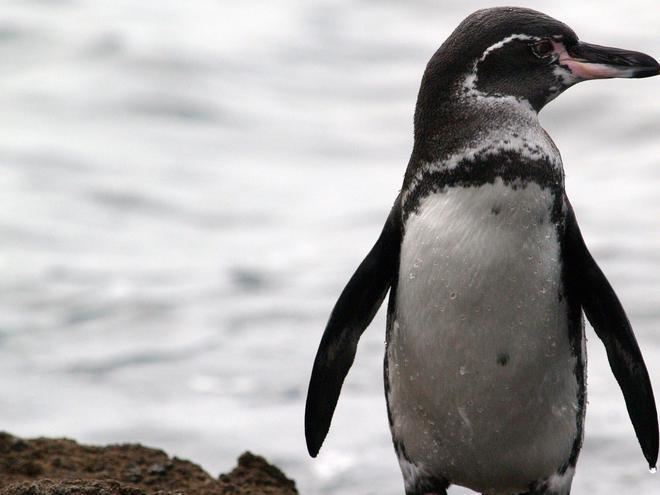 | ||
Similar Penguin, Bird, Banded penguin, Magellanic penguin, Marine iguana | ||
Galapagos penguins keeping cool
The Galápagos penguin (Spheniscus mendiculus) is a penguin endemic to the Galápagos Islands. It is the only penguin that lives north of the equator in the wild. It can survive due to the cool temperatures resulting from the Humboldt Current and cool waters from great depths brought up by the Cromwell Current. The Galápagos penguin is one of the banded penguins, the other species of which live mostly on the coasts of Africa and mainland South America.
Contents
- Galapagos penguins keeping cool
- Galapagos penguin identification
- Description
- Distribution
- Ecology and behavior
- Breeding
- Predators
- References
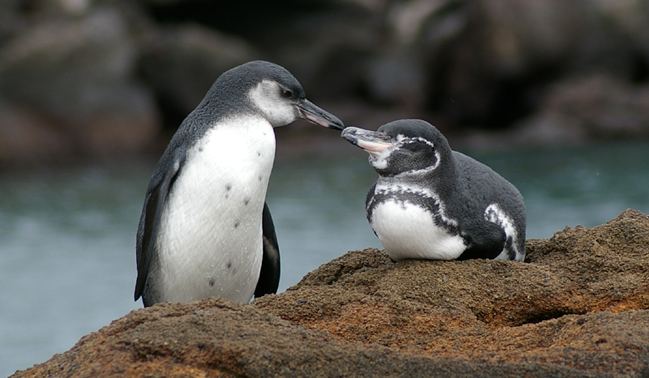
Galapagos penguin identification
Description
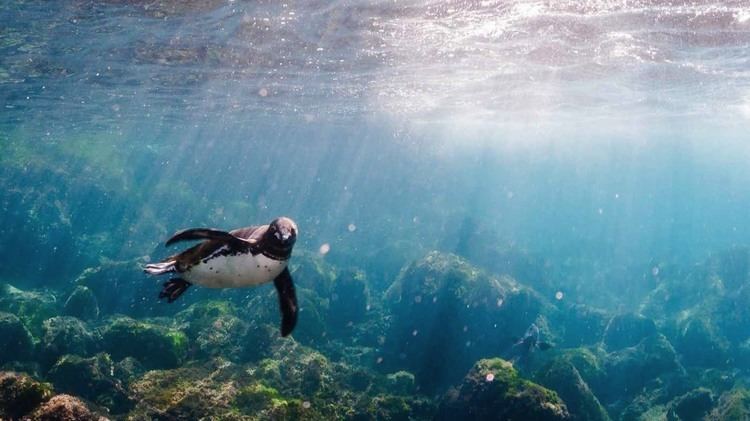
The average Galápagos penguin is 49 centimetres (19 in) long and 2.5 kilograms (5.5 lb) in weight. It is the second smallest species of penguin after the little penguin. Galápagos penguins have a black head with a white border running from behind the eye, around the black ear-coverts and chin, to join on the throat. They have black-grey upperparts and whitish underparts, with two black bands across the breast, the lower band extending down the flanks to the thigh. Juveniles differ in having a wholly dark head, greyer on side and chin, and no breast-band. The female penguins are smaller than the males.
Distribution
The Galápagos penguin is found primarily on Fernandina Island and the west coast of Isabela Island, but small populations are scattered on other islands in the Galápagos archipelago.
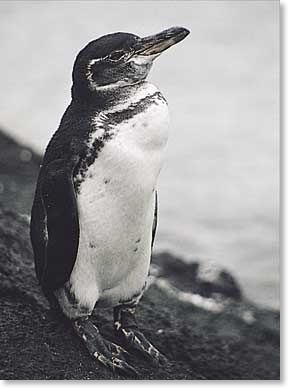
While ninety percent of the Galápagos penguins live among the western islands of Fernandina and Isabela, they also occur on Santiago, Bartolomé, northern Santa Cruz, and Floreana. The northern tip of Isabela crosses the equator, meaning that some Galápagos penguins live the northern hemisphere, the only penguins to do so.
Ecology and behavior
The penguins stay in the archipelago. They stay by the Cromwell Current during the day since it is cooler and return to the land at night. They eat small schooling fish, mainly mullet, sardines, and sometimes crustaceans. They search for food only during the day and normally within a few kilometers of their breeding site. They depend on the cold nutrient-rich currents to bring them food.
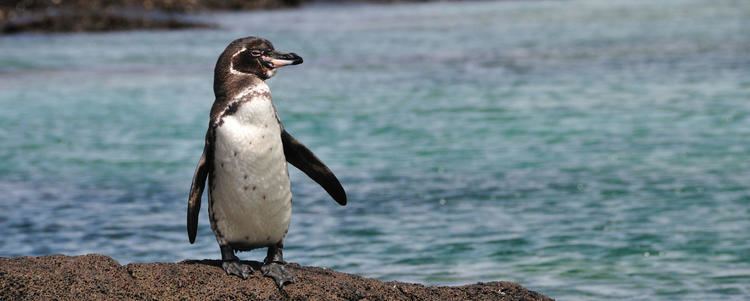
The temperature on the Galapagos Islands stays between 15 and 28 °C (59–82 °F). During El Niño seasons, the penguins put off breeding, because their food becomes less abundant; this makes the chances of raising offspring successfully unfavorable compared to the chances of dying in the attempt. They usually breed when the sea surface temperature is below 24 °C (75 °F) which results in more food for them. The strong sun is the main problem for the penguins. Their primary means of cooling off is going into the water, but they have other behavioral adaptations because of all the time they spend on land. They use two methods of thermoregulation in warmer weather on land. One is by stretching out their flippers and hunching forward to keep the sun from shining on their feet, since they can lose heat from their flippers due to the blood flow there. They also pant, using evaporation to cool the throat and airways. Galápagos penguins protect their eggs and chicks from the hot sun by keeping them in deep crevices in the rocks.
The species is endangered, with an estimated population size of around 1,500 individuals in 2004, according to a survey by the Charles Darwin Research Station. The population underwent an alarming decline of over 70% in the 1980s, but is slowly recovering. It is therefore the rarest penguin species (a status which is often falsely attributed to the yellow-eyed penguin). Population levels are influenced by the effects of the El Niño Southern Oscillation, which reduces the availability of shoaling fish, leading to low reproduction or starvation. However, anthropogenic factors (e.g. oil pollution, fishing by-catch and competition) may be adding to the ongoing demise of this species. On Isabela Island, introduced cats, dogs, and rats attack penguins and destroy their nests. When in the water, they are preyed upon by sharks, fur seals, and sea lions.
Breeding
There are fewer than 1000 breeding pairs of Galápagos penguins in the world. Most nests are seen between May and January. The nests are made within 50 metres (160 ft) of the water on the shore, usually on Fernandina and Isabela Islands. Adults stay near the breeding area during the year with their mate. When the penguins are breeding, incubation takes 38–40 days with both parents helping out. The Galápagos penguin mates for life. It lays one or two eggs in places such as caves and crevices, protected from direct sunlight, which can lead to the eggs overheating. One parent will always stay with the eggs or chicks while the other is absent for several days to feed. The parents usually rear only one child. If there is not enough food available, the nest may be abandoned. Thirty days after the chicks hatch, the chicks' feathers are brown above and white below. These feathers are to protect the chicks from the strong sun rather than keep them warm. Bermudian naturalist Louis L. Mowbray was the first to successfully breed the Galápagos penguins in captivity.
Predators
Because of the Galápagos penguin's smaller size, it has many predators. On land, the penguins are preyed upon by crabs, snakes, rice rats, cats, Galapagos hawks, and short-eared owls. While in the water they are preyed upon by sharks, fur seals, and sea lions. They face many hazards due to humans, as well as the hazards of unreliable food resources and volcanic activity. Illegal fishermen may interrupt the penguins’ nesting, and they are often caught in fishing nets by mistake.
